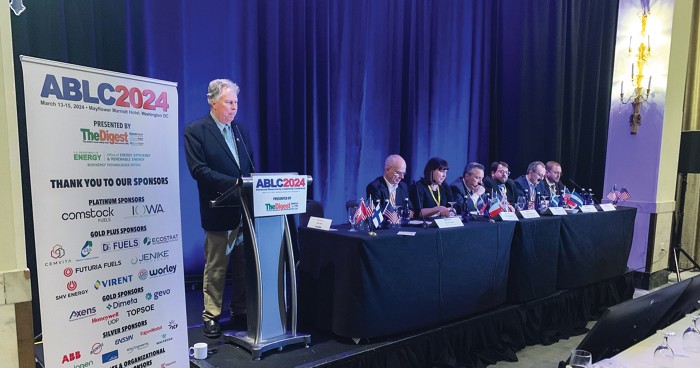Advertisement
Grab your lab coat. Let's get started
Welcome!
Welcome!
Create an account below to get 6 C&EN articles per month, receive newsletters and more - all free.
It seems this is your first time logging in online. Please enter the following information to continue.
As an ACS member you automatically get access to this site. All we need is few more details to create your reading experience.
Not you? Sign in with a different account.
Not you? Sign in with a different account.
ERROR 1
ERROR 1
ERROR 2
ERROR 2
ERROR 2
ERROR 2
ERROR 2
Password and Confirm password must match.
If you have an ACS member number, please enter it here so we can link this account to your membership. (optional)
ERROR 2
ACS values your privacy. By submitting your information, you are gaining access to C&EN and subscribing to our weekly newsletter. We use the information you provide to make your reading experience better, and we will never sell your data to third party members.
Biofuels
CF Industries and Poet pair up on low-carbon fertilizer
Pilot program links renewable energy to fuel ethanol through agriculture
by Craig Bettenhausen
July 18, 2024
| A version of this story appeared in
Volume 102, Issue 22

You can do just about anything with renewable energy. The fertilizer maker CF Industries Holdings and the ethanol maker Poet have paired up to demonstrate a use they say can cut the carbon footprint of biofuels.
They are developing a supply chain that will start in Donaldsonville, Louisiana, where CF Industries recently installed a 20 MW electrolyzer that splits water to make hydrogen using renewable energy purchased via a credit trading system. The company is also adding equipment at the site that will capture carbon dioxide from conventional hydrogen production starting in 2025.
CF Industries will use the hydrogen to make ammonia, which it will then ship to the upper Midwest and sell as fertilizer to farmers that supply corn to five Poet ethanol plants in the region. The firms say the result will be a 10% reduction in the carbon intensity of the ethanol, which Poet will sell to gasoline blenders and to plants being constructed to convert ethanol into jet fuel and renewable diesel.
“This project is focused on developing a certifiable supply chain of low-carbon ammonia,” CF Industries spokesperson Chris Close says. “It seeks to answer ‘How do we track low-carbon ammonia production from the plant to the field to the ethanol plant, ensuring that the lower carbon intensity is correctly attributed throughout the production, transportation, and use of the product?’ ”
Ammonia production is a good target for decarbonization, says Tad Hepner, vice president of strategy and innovation at the Renewable Fuels Association, an industry group. “Nitrogen fertilizers make up the lion’s share of the carbon intensity of our corn feedstock,” he says.
Another big chunk of ethanol’s net greenhouse gas emissions comes during fermentation, which creates 44 g of CO2 for every 46 g of alcohol. About 30% of US ethanol plants capture that carbon, Hepner says, but they are generally near CO2 pipelines, sequestration sites, or CO2 consumers such as beverage bottling plants. Low-carbon ammonia democratizes decarbonization for ethanol producers that aren’t near that kind of infrastructure, Hepner says. “We’ll take all the wins we can get.”
The renewable electricity that CF Industries will consume could be used for efforts to mitigate other climate change, but the 2022 Inflation Reduction Act and other US government incentives push renewable energy toward fuels like ethanol and away from things like decarbonizing the local electricity grid, says Stefan Unnasch, managing director of the sustainability consulting firm Life Cycle Associates. “Why not just take the electricity and run an electric boiler? The answer is that I wouldn’t get the IRA credit.”
Biobased chemicals don’t qualify for most sustainability subsidies, Unnasch says. “Isn’t it interesting that the fuel industry gets all the money?”
At the same time, Unnasch says, conventional ammonia plants churn out huge amounts of carbon dioxide as they derive hydrogen from natural gas. So as a way to displace the use of fossil fuels, ammonia is “about the most bang you can get for your buck on renewable power,” he says.





Join the conversation
Contact the reporter
Submit a Letter to the Editor for publication
Engage with us on Twitter